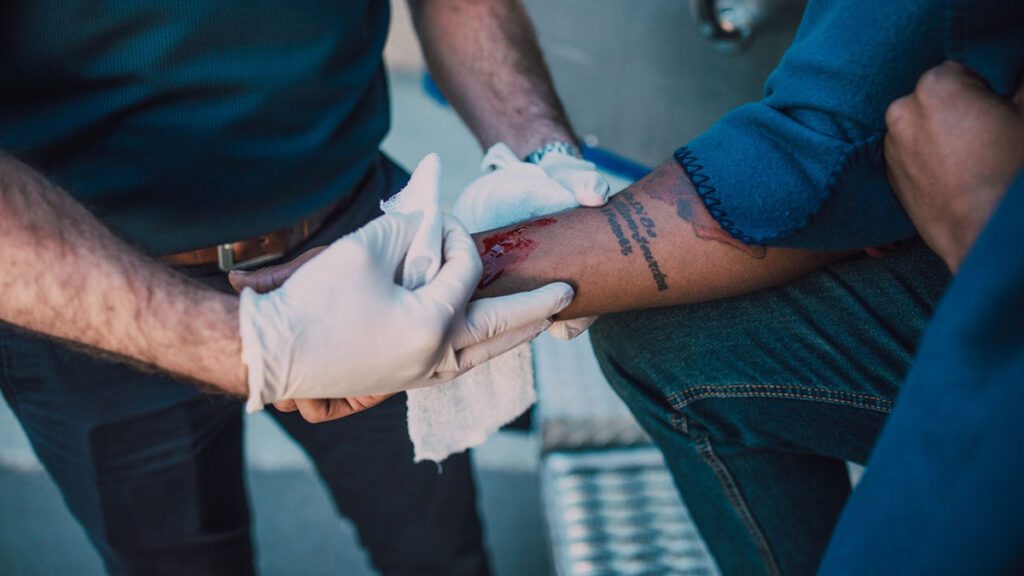
Guest article by Josh Haney, Emergency Medical Technician, TECC, TCCC
WARNING- All information presented is strictly educational in nature. The following techniques are in no way a replacement for adequate medical training. The author and publisher are absolved from any responsibility.
There is an old axiom within the preparedness community that you need to have three Bs in order: beans, bullets, and bandages. This primer will focus on the final part of that trifecta, wound dressings, as without it, you will probably not live long enough to require the other two. Build or buy a medical kit and make sure it includes the products mentioned here.
Bandaging, defined in the Oxford English dictionary as “to bind a wound or part of the body with a protective strip” dates back to the dawn of time, as one can easily see at any museum that has even a passing interest in Egyptology, or any of the other indigenous peoples who mummified their dead, or ancient Greece and Rome, where ancient vases dated to 500 BC depict the injured being treated. So long as humankind has been walking, wearing, or working, some way of treating wounds has been needed.
Medical Products for Wound Dressings
These days, wound care has become a specialty within the hospital, with RNs, NPs, and physicians dedicated to dealing with a variety of injuries, as well as the infection control procedures necessary to prevent a condition going from bad to worse. While this article will not dive that deeply, it will give you the reader a working knowledge of different types of bandages, how they can be used, as well as what types of ailments they may work for.
While I will not be going into the application of the bandages, and how to treat every type of injury, I do recommend that everyone reading this take the opportunity to attend, at the very least, a basic first-aid or stop the bleed course. These types of courses are available in every state, most given free of charge, and will provide you and your family with necessary working knowledge, not just theory.
1 – 60cc Syringe
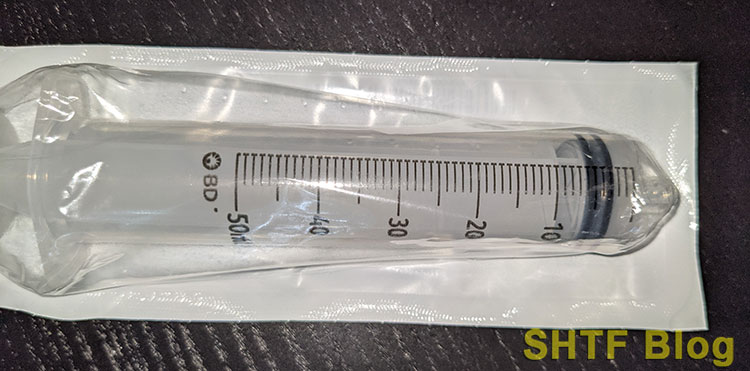
One word of advice, make certain to thoroughly clean the wounds before bandaging, this not only is performed to remove foreign matter, but also to prevent infection. High pressure irrigation can be achieved using a 60cc syringe and a bottle of normal saline or sterile water.
No products found.
While that is really the standard, the real point is just as I stated above, to remove any type of debris that can lead to a serious complication. Also keep in mind that something like tetanus, which most folks take for granted now due to the wide availability of vaccines, could become a big problem without access to a hospital setting.
2 – Adhesive Bandages
I am going to generally assume that everyone knows about adhesive bandages, usually called by a brand name that ends in -AID. These guys come in a ton of different sizes, shapes, and colors. Infinitely available, at least presently, they can be found everywhere, from Grandma’s purse to the cheapest first aid kit.
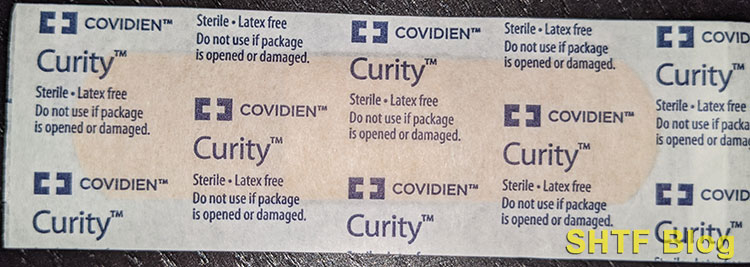
Great for small scrapes, cuts, or blisters, they have been around since the 1920s for the simple reason that they work. Originally created for the wife of the designer, who seemed to have been a bit of a klutz in the kitchen, so she could tend her own wounds. They do have their drawbacks, but newer additions to the design, like waterproof material or those impregnated with antibiotic creams, have kept these as a mainstay in any kit.
3 – Ace Bandages
ACE bandages are another that have really stood the test of time. Originally the All Cotton Elastic, or ACE, was a compression bandage that was created around the same time as the adhesive bandage.
- VALUE PACK — Your package includes four rolls of premium elastic bandage wraps, two 3-inch rolls, and two 4-inch rolls. The smaller one is perfect for covering smaller areas, while the larger compression bandage wrap is ideal for larger areas. You also get three varieties of clips included, ensuring optimal selection for your needs.
- RELIABLE SUPPORT — Mighty-X elastic bandages provide snug support while helping you maintain an active lifestyle. Their adjustable tension and convenient elastic bandage clips’ closures ensure tight compression, actively reducing swelling in the injured area.
- FIRST AID KIT MUST-HAVE — Our bandages are perfect as compression wraps for legs and arms. The included 3 and 4-inch sizes are perfectly suited to covering various traumas and are convenient to have on hand for potential injuries.
- DURABLE MATERIAL — Mighty-X elastic wrap bandages are made from premium polyester. They provide the best results by keeping your muscles snug for as long as you need. These reusable bandage wraps ensure tight support even after multiple uses.
- EXCELLENT ELASTICITY — Each crepe bandage extends up to 15ft when fully stretched. This is long enough to wrap most wrists, ankles, or knees. Moreover, its exceptional stretch ensures comfortable wear and reliable support throughout the day.
The intention was to use it for sprains, strains, injured joints, splinting fractures, but as time has gone by so many more uses have been established, such as treating venous issues like lymphedema and body wraps for weight loss. Latex has been removed from the ACE, making it safe for those with allergies, and the little metal clips have in recent years been replaced by Velcro.
4 – Cohesive Bandages
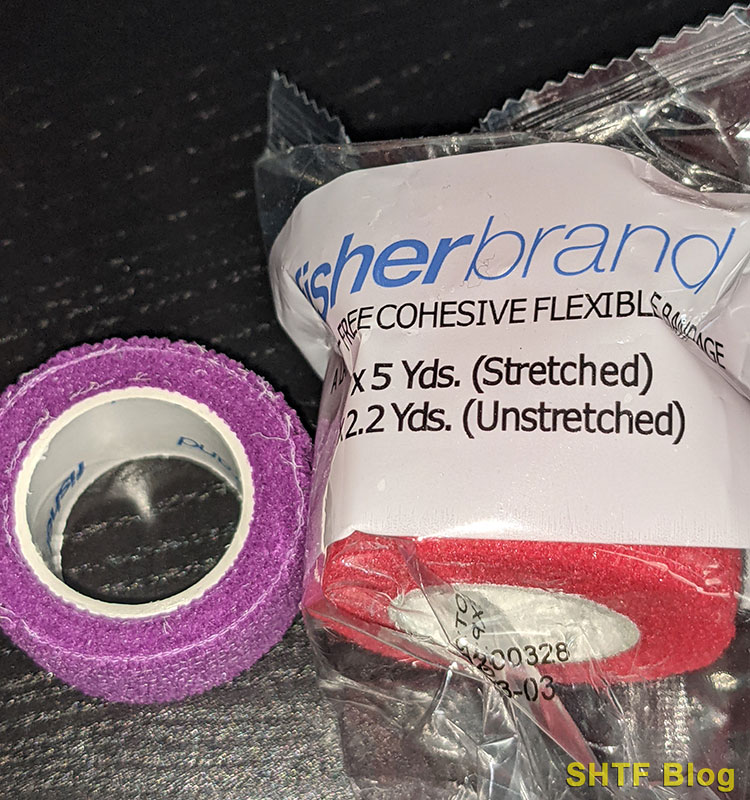
Cohesive bandages are a flexible compression style bandage that stick to themselves, thus not allowing for the loosening that can occur with something like the ACE. Excellent for holding things like gauze or non-adherent bandages in place, it is a cheap and effective tool for every first-aid kit.
- PACK OF 6 - Each pack contains 6 individually poly bagged latex free bandage rolls that each measure 2 inches wide and are 5 yards long. It's a perfect length for all body part - such as ankles, wrists, fingers, toes, elbows, and knees.
- STRONG & SELF-ADHESIVE - Ever Ready First Aid bandages are designed to offer excellent support. These bandages will not slip, meaning you won't have to frequently readjust them. The self adhesive bandages will stay in place even when we tor sweaty. The self adhesive design allows the bandages to be applied without the use of any clips or pins to stay in place.
- STRETCHY & COMFORTABLE - The durable elastic material allows the bandages to be applied to virtually any body part quickly and easily. The fabric can easily be torn by hand, no shears or scissors required.
- SOFT, BREATHABLE MATERIAL - The porous, lightweight material allows the injured area to breath, which facilitates healing and recovery.
- RAINBOW VARIETY PACK - Comes in six fun colors; green, pink, red, purple, blue, and navy. Great for kids!
Most folks that have donated blood or had a blood test have probably had Co-Band used to hold pressure, and veterinary medicine uses it almost exclusively. Because it can come in a plethora of colors and even designs, some companies have started selling it as “gun wrap,” a low-cost way to camouflage firearms.
5 – Gauze Sponges
Gauze, which you will generally find either as sponges in various sizes, like 2”x2” or 4”x4”, or in rolled “cling” style in varied lengths and widths, dates far back into history. Cotton or linen that is woven in such a way as to mimic the clotting mechanisms within the body that create scabs, these can be placed over larger wounds than an adhesive bandage, and then held in place by wrapping the area with “cling” gauze.
- 50-count package of Large Band-Aid Brand of First Aid Products Tru-Absorb Sterile Gauze Sponges for minor wound care. Use absorbent gauze pads for cleaning and applying medication to minor wounds, cuts, and burns
- These sterile first aid gauze pads feature a special low-linting design which helps provide cleaner wounds and may help prevent irritation
- Each large gauze sponge measures 4 inches by 4 inches in size, making them the ideal first aid coverings for minor cuts, scrapes, and burns. Band-Aid Brand absorbent gauze sponges can also be used as a cushioning dressing for wounds
- Sterile sponges feature soft cushioning offers extra comfort when cleaning dirt and contaminants that may cause infection from the injured area
- Use these first aid gauze sponges for cleaning and prepping wounds, or for applying medication. The individually wrapped gauze pads are a perfect addition to first aid kits and at-home wound care supplies
Remember that if the wound continues to bleed, simply add more gauze sponges on top, never removing the saturated ones. If the bleeding still does not stop, a tourniquet may be needed especially if there is bright red spurting or dark red oozing blood (the use of tourniquets is well outside the scope of this article). Most wrapped gauze bandages have measurement demarcation on the packaging, used to approximate the length and width of the injury in the field.
6 – Abdominal Pads
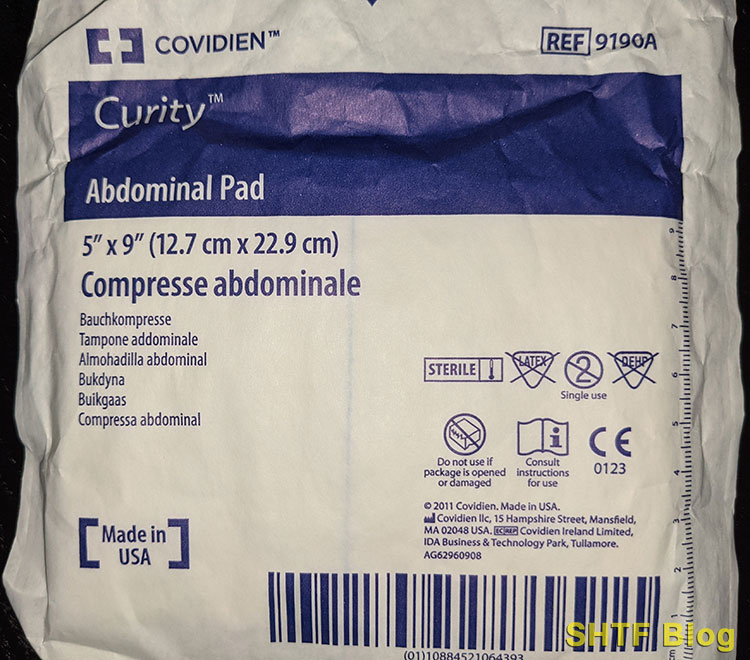
Abdominal Pads, ABD Pads, or the Army Battle Dressing, was originally designed by the military for the treatment of large wounds that would require a significant amount of drainage. A thick, layered bandage roughly 5”x9”, but can come in even larger sizes, they are designed to wick away excess fluid from an injury site. Once placed over a wound, these are usually held in place with medical tape and/or cling gauze.
- EXTRA THICK & ABSORBENT: Our ABD pads are designed to be used when high-absorbency is the only way to go. Made with a fluffy inner that can absorb and dispense fluids, our sterile abdominal pads are simply a must-have for all First-Aid Kits.
- SUPREMELY SOFT & SCRATCHLESS: Made with silky-soft, non-woven material, the outer layer feels like a really soft fabric and never scratches even tender, healing incisions. Furthermore, the sealed edges, prevent unwanted leakages.
- INDIVIDUALLY WRAPPED: We make sure to preserve our pads’ quality as best as possible by individually wrapping them. This way we ensure that they reach you in pristine condition, fully sterile and ready to be used.
- PREPARED FOR EVERYTHING- From post operation wounds, to injuries, diabetic-vein ulcers, heal wounds and traumas, our 5” x 9”inch pads can help you against any type of heavy exudates.
- PRACTICALLY PACKED- Our abdominal pads come in packs of 20. They’re packed into open trays for greater ease of use, and when closed they can easily be stacked or stored away.
Another military dressing, the Israeli Bandage, designed by medic Bernard Bar-Natan, is a close cousin of the Army Battle Dressing, combining its effectiveness with the compression of the ACE, and creating what has become the bandage of choice for armies all over the globe.
Able to be applied one handed, the innovative design features a non-adherent pad, a pressure device that applies direct pressure to the area to staunch bleeding, and a bar that locks the dressing in place. These can be found in any quality IFAK or active shooter kit.
7 – Non-Adherent Dressing
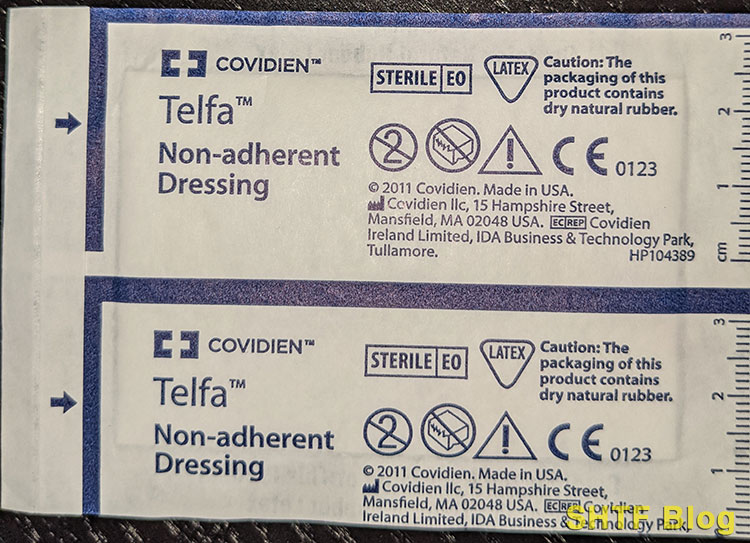
Non-adherent pads come in various sizes and are used to cover wounds in a manner that allows for pain free removal during frequent dressing changes. You will often see these used in the emergency room setting after someone has gotten sutures.
- Absorbent cotton pad
- Superior "ouchless" Telfa dressing won't disrupt healing tissue by sticking to wound
- Each sterile dressing is individually wrapped in a peel-open envelope
- Ideal as a primary dressing for lightly draining wounds
- Bonded on both sides with perforated non-adherent film, and can be cut to fit any shape without separating
Covered in a shiny non-stick material, these bandages resemble the liners that come under meat when you purchase it from the butcher. Antibiotic ointments can be placed on the wound, and these pads allow for minimal drainage, breathability, and above all ease of removal.
8 – Non-Adherent Strips

Impregnated dressings, which are simply bandages that have been coated in substances, for example petrolatum, are designed to create an environment that promotes healthy regrowth of skin. You will often see these used in burns (thermal and chemical), road rash, as well as surgical sites and debridement. This category also includes bandages that include hemostatic agents, used to stop bleeding by assisting in the clotting cascade.
No products found.
These dressings tend to come in the same standard sizes and shapes, like 4”x4” or rolled gauze, but are treated with chemicals that actively work at stopping the bleeding. While the 4”x4” is utilized in remarkably the same way, the rolled gauze is predominantly used in wound packing, not wrapping. You will also notice that this type of rolled dressing has a radiopaque strip running through it, designed to show up during radiology so that the gauze can be removed during surgical intervention.
9 – Transparent Film Dressing
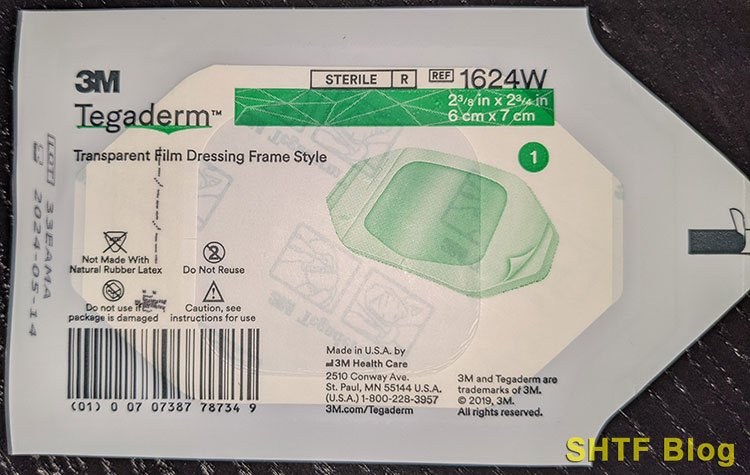
Transparent film dressings also come in a vast array of sizes and have uses in everything from covering an IV site to chest seals used for dealing with penetrating trauma that may lead to a pneumothorax.
- Made with a hypoallergenic, latex-free adhesive
- Conformable, dressing flexes with skin for greater patient comfort
- Picture-frame delivery makes placement accurate and easy, minimizing potential to stick to gloves or to itself
- Application - Short peripheral and midline venous catheter
- Application - Clean, closed surgical incisions
10 – Butterfly Bandages
Last, but certainly not least, are the reinforced skin closures. These are sold under a few different names and are designed to close a small laceration without the use of sutures/stitching. Most folks have probably seen “butterfly” bandages, as they seem to throw at least one into even the cheapest of first aid kits.
The idea is to tightly hold the margins of the wound together until it closes on its own. While some are self-adhesive, others are designed to work in conjunction with surgical glue, which is a type of sterile cyanoacrylate, that dries very quickly, and will eventually fall off the body once it is healed.
Training is Important
Most of these items can be found easily in any pharmacy, medical supply company, or even online retailers. Some of the hemostatic dressings tend to come in both civilian and LEO/EMS/military configurations, which may make it difficult to get a specific agent if you are not within that community.
There are also a ton of companies out there that make fully loaded trauma bags and STOMP (SEAL Team Operational Medical Pack) kits. I would recommend that in addition to the above-mentioned items, make sure you get medical tape, a pair of trauma shears, some tubes of triple antibiotic ointment and burn cream, as well as self-activating hot and cold packs.
I would be remiss if I didn’t put a couple of things out there in closing. Since this type of info seems to rear its ugly head all over internet survival groups time and time again, DO NOT use things like tampons when dealing with wounds and bleeding or belts and shoelaces for tourniquets. There is no reason, in today’s world of vast information availability, that anyone should be doing these things.
Stop The Bleed courses have trained over a million citizens, in most cases free of charge, and have provided them with the skills needed to deal with traumatic events. They are offered everywhere, with the primary goal being to train anyone to help if EMS is on the way, or the far worse event that a mass casualty situation has taken place.
There is always a shortage of trained EMS professionals. Every town that I have ever traveled to has signs in front of their fire and rescue houses that read looking for volunteers. Everyone should go out and become, at the very least, a certified first responder (CFR). Most, if not all, of these companies would love to have you come in and volunteer.
They offer free training to members, as well as usually footing the bill for becoming an EMT, often with the basic agreement that you remain an active member for a set amount of time. These resources, and the number of online retailers that carry all these things make it very easy to have the appropriate gear on hand, get adequate training, and do some good out there.








1 comment
It’d be great to to be able to print this article without the Amazon ads between each item.